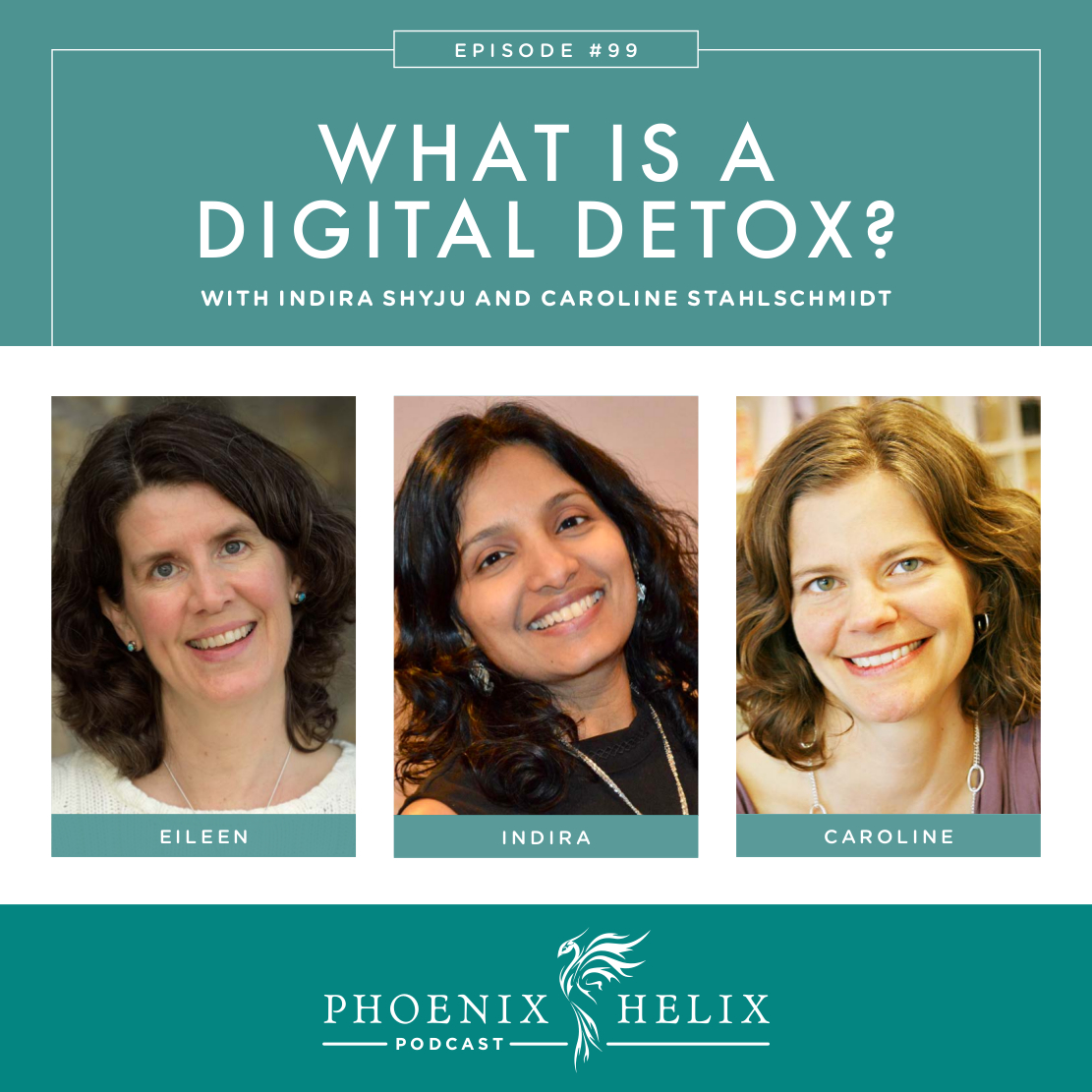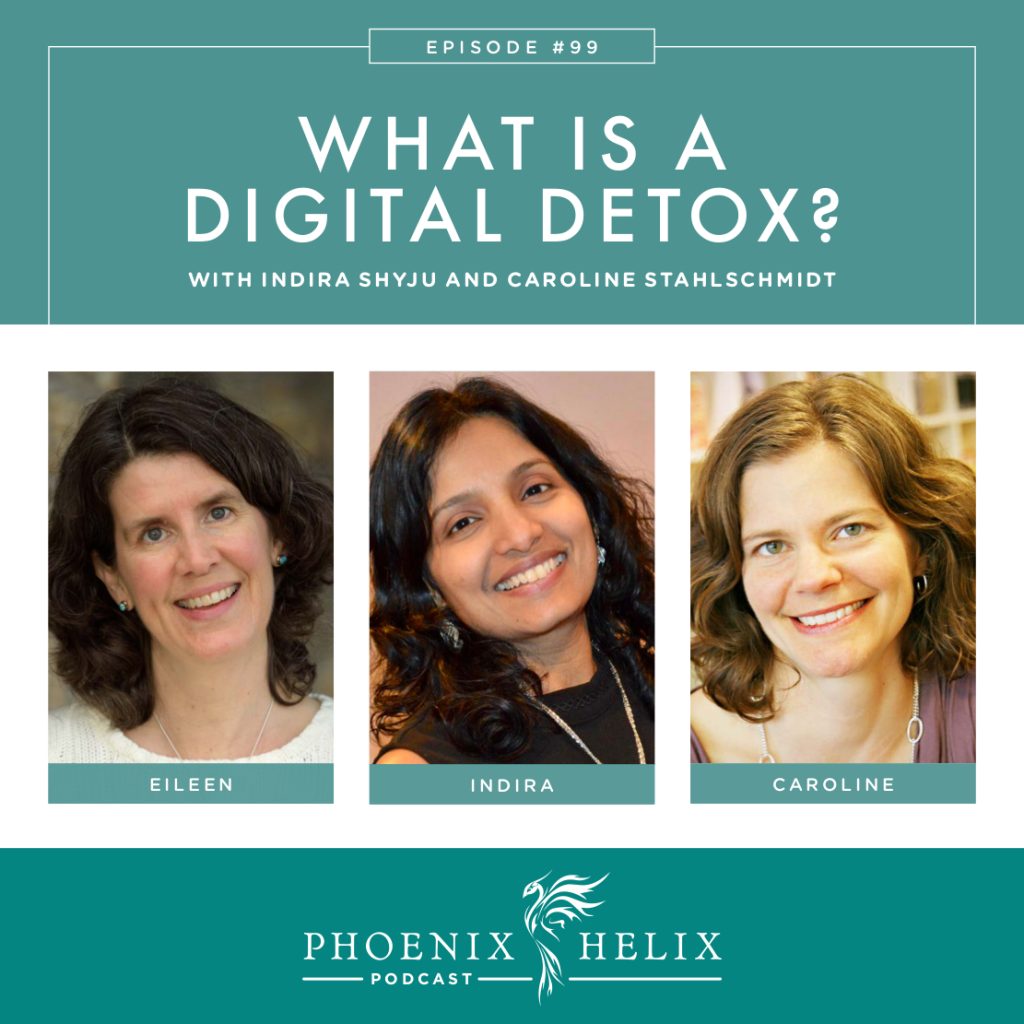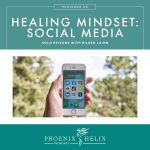How Much Time Do You Think You Spend Online Daily?
I think most of us would agree that technology has brought a lot of improvement to our lives. I couldn’t be a blogger or podcast host without it. But it also comes with some negative side effects. Smartphones in particular are often omnipresent in our lives, simply due to their convenience and portability. They can be distracting, addictive, and take up huge swaths of time. In modern life, most people feel insanely busy, but few realize that they’re spending hours each day on their phones. The average smartphone use in the United States is over 4 hours per day. What does this have to do with autoimmune disease? A healing diet and lifestyle takes a lot of time to implement, so right away, a smartphone is competing for that time. But it impacts our lives in other ways, too. Technology use has been linked to increases in anxiety, depression, feelings of social isolation, insomnia, brain fog, the inability to concentrate, and more. When we have these issues, we often blame our diets or our autoimmune disease (which can be the cause), but technology can be a root cause is well. I thought that was worth exploring. So, in this podcast, two guests and I share our experiences “unplugging” in a variety of ways, from small to large. Here’s a printable PDF of all 10 experiments, so you can try them yourself.
Listen to the Show
- Subscribe to my podcast through your favorite podcast app: iTunes, Stitcher, Google, TuneIn, Spotify, Amazon, etc.
- You can also listen to the episode right here through the player below, and if you subscribe to my newsletter you’ll get notified of future episodes.
Podcast: Play in new window | Download
Show Notes
- Intro (0:00)
- Thank You to Our Podcast Sponsor: Shop AIP (4:35)
- KC Natural is an AIP-friendly company with a whole line of sauces, dressings, condiments, and spice mixes. You can buy them all through Shop AIP!
- An online store, where everything sold is compliant with the elimination-phase of the Paleo Autoimmune Protocol. Shop AIP sells a wide variety of products, including protein bars, AIP-friendly spice blends, cooking and baking ingredients, snacks, non-toxic skincare, and more.
- If you’re a first-time customer, use the code PHOENIX for 10% off your order. Purchase here.
- Meet Our Guests (6:11)
- Indira Shyju is the blogger behind Cook 2 Nourish (formerly Indu’s International Kitchen), where she loves sharing paleo & AIP recreations of her favorite recipes from around the world, especially the Kerala cuisine of Southern India. She was a pharmacist for 15 years, but she’s currently transitioning her career to become a nutritional therapy consultant. She’s also married with 2 children at home. In 2015, she experienced rapid and severe onset of rheumatoid arthritis, which disabled her within 6 months of diagnosis. Her morning stiffness was so severe, it took 2 hours before she could move her joints enough to get out of bed in the morning. She was in pain throughout the day, and pain also interrupted her sleep at night. For hours at a time, she would sit up in bed because lying down put too much pressure on her joints. The emotional turmoil of this time was even harder than the physical pain. She felt very depressed and cynical about life. The turning point for her was when she started to pray again. It shifted her perspective from cynicism to hope. Soon after that, she discovered the AIP and had the motivation to start making positive diet and lifestyle changes. The result was a dramatic drop in pain and inflammation that was also mirrored in her bloodwork. While she had been taking medication since her diagnosis, her ESR was still sky-high. It only started to drop after making this shift in diet and mindset. Now, the combination of diet, prayer, and medication is working very well for her.
- Caroline Stahlschmidt works with Andrea Nakayama at the Functional Nutrition Alliance. Caroline has a master’s degree in Human Nutrition and Functional Medicine. She fills a managerial role at FNA & also works with clients 1:1. Her workplace has experienced exponential growth in recent years, and part of the challenge has been finding a balance between passion for work, and the ability to have boundaries with work. She also has Hashimoto’s, which she manages through a combination of diet, lifestyle, and medication. Listen to her healing story in Episode 31.
- Figuring Out Our Baseline – How Many Hours We Use Our Smartphones Daily (14:15)
- Update 2022: iPhones and Android phones both offer screen tracking as a feature now. Go to Settings and look for Screen Time on iPhones and Digital Wellbeing on Android.
- Caroline: 3 hours per day, with an average of 21 pickups a day. The screentime was mostly comprised of text messages, phone calls, checking email, and her favorite yoga app. However, the number of pickups surprised her and made her aware of how often she picks up her phone out of habit or seeking a distraction from work. She also realized that keeping it by her bed at night was a temptation to pick it up, so she bought a sunrise alarm clock and removed the phone from her bedroom.
- Indira: 3-1/2 hours per day, with 30-40 pickups a day. She found this reality check really powerful, because she has a very busy life and didn’t realize how much time was spent on her phone. She also saw that she had an addictive pattern of picking up her phone throughout the day and going through all her apps and then checking email before putting it down again. Instagram was her most used app.
- Eileen: 2-1/2 hours per day, with an average of 17 pickups a day. Podcasts were my highest use, with Instagram a close second. I love podcasts, but I noticed that I was unintentionally filling all of the silence in my day, as I combined podcast listening with most activities: walking, driving, cooking, cleaning, etc. And over time, that became really tiring. I never gave my brain a break.
- 10 Unplugged Experiments (25:58)
- See the full list here – It’s a printable PDF of all 10 experiments, so you can try them yourself.
- Easiest vs. Hardest Experiments for Us (28:38)
- Indira: The easiest was turning off push notifications. The hardest was the unplugged day, because she has two children who often need to get in touch with her. She enlisted her husband’s help, where he was the family contact person for the day. Once she knew her family had what they needed, she enjoyed the day, spending more time outside and also getting a lot of focused studying done for her nutrition classes.
- Caroline: The easiest was giving up taking pictures, because she never takes them anyway. And she was already in the habit of keeping push notifications turned off. The hardest was setting boundaries around work email. She works with a team of people who live in different time zones. They also use a company communications platform called Slack, which can make communication even more constant. The experiment challenged her to find ways she could establish boundaries without interfering with her ability to do her job well. It’s a work in progress.
- Eileen: The easiest was turning off push notifications. I also love unplugged days – they are the most relaxed day of my week, and I’ve been enjoying those for years. The hardest was moderating podcast use. As I mentioned earlier, I found that I was filling all the silence in my days and suffering for it. So, I started consciously choosing a time every day where I don’t combine an activity with podcasts, intentionally choosing silence instead. Often, it’s cooking dinner, which makes cooking a meditative (and rejuvenating) activity for me.
- Thank You to Our Podcast Sponsor – Paleo on the Go (38:53)
- A frozen meal delivery service, 100% of their menu is compliant with the elimination phase of the paleo autoimmune protocol (AIP). They have over 5o items, including entrees, side dishes, broth, AIP-friendly bacon, and desserts.
- Use the code PHOENIX for 10% off your first order.
- Mental Side Effects of Technology Use (40:05)
- Technology use has been linked to increases in anxiety, depression, feelings of social isolation, insomnia, the inability to concentrate, and more.
- Indira: These experiments opened her eyes to how addicted she felt to her smartphone – the number of times she picked it up in a day, and the way it distracted and stole time from more important things. She now puts her phone away for 3-4 hours in the afternoon, when she is free from family obligations. She’s experienced a huge increase in her productivity and ability to concentrate.
- Caroline: Like Indira, she found that putting her phone in another room improves her ability to concentrate and do deep work. She also noticed that when she needs a true break from work to rejuvenate, she reaches for her phone (which isn’t rejuvenating) instead of doing some that is (like meditating or going for a walk.) The social media noting exercise helped her realize this.
- Eileen: A couple of years ago, I noticed that I had lost my attention span for reading novels. At the same time I started experiencing restlessness and an inability to sit still during conversations, and also anxiety, which was new for me. I made the connection that this could be the impact of technology use, so I started taking unplugged days. The results were dramatic. Taking time offline slowly restored my attention span. I could read novels and enjoy long conversations with friends again. The anxiety went away as well. That said, it wasn’t a permanent fix. Unplugged days are a necessary part of my self-care now. With this past month’s experiments, I’ve become more aware of my technology use on the days I’m plugged in. I’m slowly building the skill of managing my use (instead of letting it manage me). One thing that helps me stay focused when working at my computer is the Waste No Time browser extension, to block distracting websites.
- Indira’s Family & the Unplugged Experiments (49:25)
- With her encouragement, both her husband and her 17 year-old son downloaded a screentime app to track their technology use.
- Her husband has a very busy job, working in the IT division of a global company with employees around the world. He actually has two phones – one for work and one for personal use. He downloaded the app on his personal phone and was shocked to discover he averaged 5 hours of use daily. While some of that was work-related, it was very eye-opening and much higher than he’d guessed.
- Her son uses his phone all day every day. He listens to music through his earphones, even when talking with others. And he also uses his phone throughout the day for texting and social media. While he knew he used his phone a lot, he was still surprised by the final number. It was an opportunity for them to have a conversation about whether he wanted to spend that much time on his phone, especially when he goes to college next year with a more demanding study schedule.
- Their daughter is 11 years old and doesn’t have a phone. She does have an ipad, however, and they had conversations about her use as well.
- Boundaries Around Work & Technology (56:43)
- Caroline works for an online health & wellness company which allows her to work from home. This offers her flexibility, but it also makes the boundaries between work and time off very blurry. An added challenge is that many of her coworkers live on the West coast, while Caroline lives on East coast. If she doesn’t set a boundary around work, it’s very easy for her to continue working late into the evening.
- Communication within her company includes email, Slack, and text. Text is only used in urgent situations. She turned off push notifications for email, so that she can choose when she checks it. She also changed her Slack settings to minimize disruptions to her focused work.
- Basecamp is software designed to help companies (and their employees) focus their time efficiently.
- Podcasts: Hurry Slowly and Rework.
- Our Favorite Uses of Technology (1:01:50)
- Indira: Communicating with her family in India. When she moved to the USA 20 years ago, phone calls were very expensive. She waited until the weekend when prices were lowest and paid $10 for a 10-minute phone call to her mother. Now, with WhatsApp, she can make free video calls to anyone around the world. While technology can sometimes cause feelings of social isolation, when used well it can connect us more deeply across distances.
- Caroline: Texting. She loves the ease of staying connected with her husband, family and friends. It’s also helped her maintain strong relationships with her friends from college. They have an ongoing group text where they share what’s going on in their daily lives. They also get together in person once a year. Lastly, Caroline has a few apps that she loves, which add rather than detract from her life: YogaGlo, Insight Timer, and Flo Period Tracker.
- Eileen: My health and my career. I couldn’t be a blogger or a podcaster without the advances in technology over the past 2 decades. Not only did it allow me to learn about the AIP and make dramatic improvements in my own health. It also connected with me a community of like-minded people, including many of the guests on this podcast.
- Resources
- Outro (1:08:01)
- Indira is the blogger behind Cook 2 Nourish. Caroline works at The Functional Nutrition Alliance.
- Eileen (your podcast host) is the author of multiple books, written to help people thrive with autoimmune disease. Learn more on the Books Page.
- If you like this podcast, follow or subscribe through your favorite podcast app. You can also subscribe to Eileen’s biweekly newsletter.
- Check out the entire archive of podcast episodes.
You May Also Be Interested In
Spreading the Word
If you like the podcast, please leave a positive review in iTunes. It would mean the world to me, and also helps others find the podcast. Here are some quick instructions using your iPhone:
- If you are already subscribed to my podcast: (1) Click the purple podcast icon. (2) At the bottom of the screen, click Library. (3) At the top of the screen, click Shows. (4) Click the Phoenix Helix podcast image. (5) Scroll down the page, and you’ll see Ratings and Reviews. Scroll down a little bit more and click on Write a Review. This will bring up the review screen. Tap 5 stars (if you love the podcast), and then click in the title box, and it will bring up the keyboard. Enter a title and short review. (6) Click Send in the upper right corner. (7) Thank you! Positive reviews give the podcast a higher search ranking in iTunes, helping people find it and letting them know it’s a quality podcast and worth their time to listen.
- If you haven’t subscribed to my podcast: (1) Click the purple podcast icon. (2) In the lower right corner, click the magnifying class. (3) Type Phoenix Helix in the search box. (4) Click the podcast cover in the Show list. (5) If you’d like to subscribe, click the + sign at the top of the screen. (6) To write a review, scroll down the page, and you’ll see Ratings and Reviews. Scroll down a little bit more and click on Write a Review. This will bring up the review screen. Tap 5 stars (if you love the podcast), and then click in the title box, and it will bring up the keyboard. Enter a title and short review. (7) Click Send in the upper right corner. (8) Thank you! Positive reviews give the podcast a higher search ranking in iTunes, helping people find it and letting them know it’s a quality podcast and worth their time to listen.









